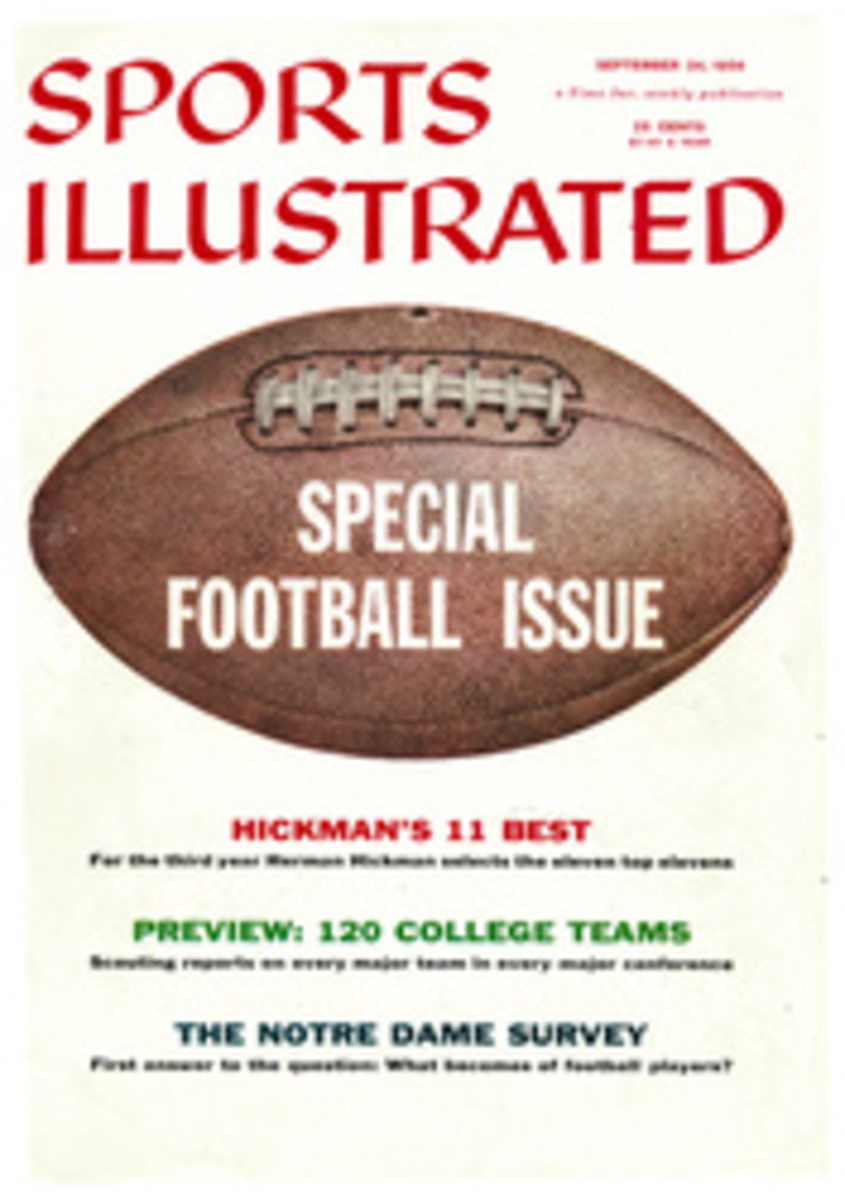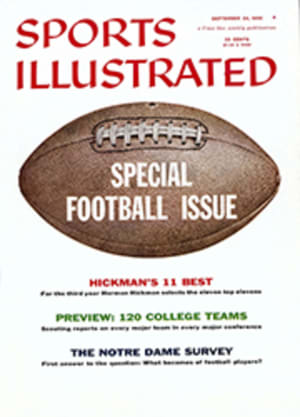
ENCORE FOR HARVIE WARD
LAKE FOREST, ILL.
At the Knollwood Club, an only moderately testing course on the outer reaches of Chicagoland, Harvie Ward proved indisputably last week that he is the finest amateur golfer of the decade when he made a brilliant and successful defense of the United States Amateur Championship which he won a September ago at the Country Club of Virginia. Six precarious rounds of 18-hole matches precede the 36-hole semifinals and final in the Amateur, and to march through the tournament requires a little bit of luck and a great deal of technical skill and match play savoir-faire. In becoming the first man in 20 years to capture the Amateur two years in a row, Ward, the verveful, honestly engaging 30-year-old Carolinian who now sells autos in San Francisco, joins an illustrious and select band: Lawson Little (1934-35), Bob Jones (1924-25, 1927-28), and before them, Jerry Travers, Chandler Egan, Walter Travis and H. J. Whigham. That is good company to keep and it is right where Harvie belongs.
Interestingly enough, the prime favorite to go all the way at Knollwood was not Ward but his close friend and running-board mate from San Francisco, Ken Venturi, who had looked much sharper than Harvie in all but winning the Masters and leading all the amateurs in the Open. Swinging discernibly less smoothly and impressively than last spring, Venturi got through his first two matches but was eliminated in the third round by still another San Franciscan, Bob Roos Jr., who is better known in national merchandising than in national golfing circles. All square as they came to the 18th, a tough 435-yarder, Roos planted a lovely four-iron about five feet from the pin and dropped the putt for the hole and the match. Venturi's exploits this year have captured the imagination of golf fans, and his early exodus may have accounted in part for the disappointingly thin crowds that turned out. Or maybe, as they say, Chicagoland is a pro golf province. Whatever the reason, even Yogi Berra's replacement has more to do than the marshals did.
Ward himself had a very close call in the fourth round. Up against Frank Boynton, a young Floridian, Harvie was one down at the long 16th and on the verge of going two down (with two to play) when he lay 15 feet from the cup in three with Boynton only five feet away in the same number of strokes. But Ward holed and Boynton missed, and with the match now even, Harvie wrapped it up on the short 17th when he hit what he later referred to as "my career four-iron" about two feet from the stick. After that narrow escape, Harvie was in fairly safe shape en route to the final, though young Joe Campbell shot some phenomenal stretch golf against him in their semifinal match. One of the most colorful of the new young stars, Campbell is a blond, chunky Purdue senior—at 5 feet 8 inches he is the shortest starting player in Big Ten basketball—who dresses in outfits that feature his college's black and gold colors. He has plenty of faith in his golf and a real aptitude for competition. Only one down at lunch, he couldn't stay with Harvie in the afternoon and was 4 down coming to the short 30th, an almost hopeless position. Campbell won that hole by the surefire expedient of knocking his tee shot, a six-iron, into the cup. (The ball, hit into the wind, landed about 15 feet before the cup and rolled in as softly as if it were putted.) The next three holes were halved. Then young Campbell, 3 down with 3 to play on the long 34th, rolled his chip with a 10-iron into the cup from 65 yards out for an eagle 3. For that matter, he didn't miss by much on the chip shot from the fringe he needed to hole on the 35th to keep the match alive.
ONE OF THE KOCSIS BOYS
Ward's opponent in the final was a slightly older man, Charles (Chuck) Kocsis, the 43-year-old veteran from Royal Oak, Mich, who, way back in 1930 when he was a preKocsis young man of 17, eliminated Francis Ouimet in the Amateur and went on to win the Michigan Amateur six or so times, earned a spot on two Walker Cup teams (1938 and 1949) and, incidentally, emerged as the most renowned of the golf-playing Kocsis brothers who are something like the Turnesas of the Midwest. In making his way through a very tough bracket—he defeated Dick Chapman, Bob Shave, Rex Baxter and Gerry Magee, the runner-up in this year's Canadian Amateur—Chuck was nine-under-par and purred along so smoothly that in his two Thursday matches against Shave and Baxter, for instance, he hit all but three greens on the regulation shot.
Chuck's swing has altered very little over the years. On his backswing his hands are a notch higher—but that is all. He is a very good example of the longevity a basically good swinger possesses.
There were three critical junctures in the fine WardKocsis final. The first came on the 17th green, where Chuck failed to get down an 18-inch putt that would have placed him 3 up, a big lead psychologically and otherwise. The second came on the 21st. With Chuck 2 up and making it very apparent at that stage that pars weren't going to budge him, Ward ignited a terrific drive by sticking a pitch eight feet from the cup and holing for his birdie. He was off to the races then, banging one beautiful shot after another, never letting up for an instant: par, par, birdie, par, birdie, par, birdie, par, par, birdie, par—until he had closed out the match 5 and 4. The third juncture had come on the 26th when Ward had moved in front by a hole. On this 445-yarder to a small, deceptive, hard-to-hit green, Kocsis whistled a superb two-iron about 15 feet from the hole. Ward choked off any counter-rush immediately by playing another one of those "career four-irons" dead to the flag. (A "career" shot, a comparatively new bit of golf language among the tournament players, is a shot that is not only good—it is a shot a player has spent his whole career trying to master.)
Throughout the tournament, for that matter, Ward, though as flavorful and informal as ever, exhibited a tremendous urge to win, a killer instinct, in fact. This is entirely new to his golf. If he manages to summon that mood next autumn at The Country Club, Brookline, where the 1957 Amateur will be held, he stands an excellent chance, despite the hazardous construction of the tournament, of becoming the first man in history to win the title in three consecutive years.
THREE PHOTOS
WARD BARELY MISSES PUTT, LEFT, ON 13TH HOLE OF FINAL MATCH WITH KOCSIS. HE CHIPS, CENTER, INSIDE KOCSIS' BALL ON 28TH TO SET UP A BIRDIE 4. RIGHT, HE RECEIVES CONGRATULATIONS OF LOSER AFTER BECOMING FIRST IN 20 YEARS TO WIN AMATEUR TITLE TWO YEARS IN ROW

